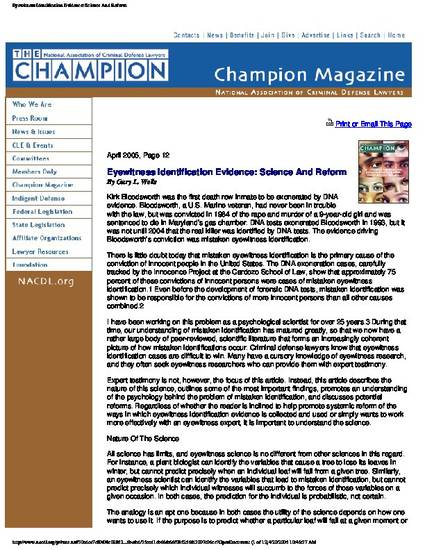
Kirk Bloodsworth was the first death row inmate to be exonerated by DNA evidence. Bloodsworth, a U.S. Marine veteran, had never been in trouble with the law, but was convicted in 1984 of the rape and murder of a 9-year-old girl and was sentenced to die in Maryland’s gas chamber. DNA tests exonerated Bloodsworth in 1993, but it was not until 2004 that the real killer was identified by DNA tests. The evidence driving Bloodsworth’s conviction was mistaken eyewitness identification.
There is little doubt today that mistaken eyewitness identification is the primary cause of the conviction of innocent people in the United States. The DNA exoneration cases, carefully tracked by the Innocence Project at the Cardozo School of Law, show that approximately 75 percent of these convictions of innocent persons were cases of mistaken eyewitness identification.1 Even before the development of forensic DNA tests, mistaken identification was shown to be responsible for the
Available at: http://works.bepress.com/gary_wells/10/

This article is published as Wells, G. L. Eyewitness identification evidence: Science and reform. The Champion, (2005): 12. Posted with permission.